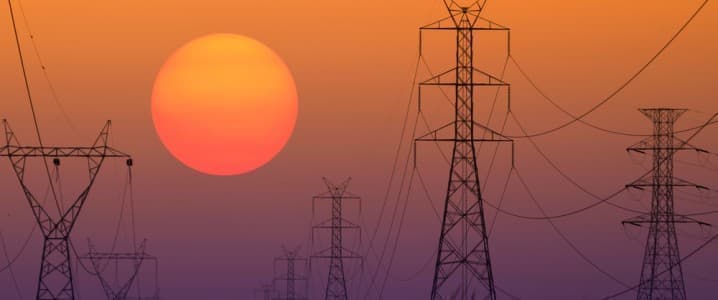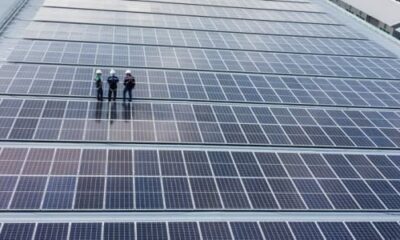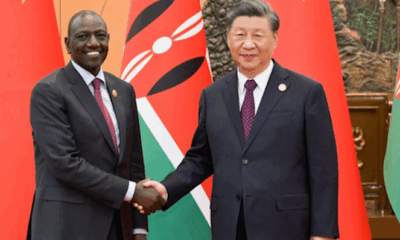Business
Asia Embraces Ammonia for Power Generation Amid Coal Challenges

Asia is shifting its energy strategy as several countries explore ammonia as a viable alternative to coal for power generation. Last year, coal accounted for a staggering 54% of the region’s power mix, making it challenging to achieve ambitious net-zero emissions targets. In a bid to reduce emissions, nations such as China, Indonesia, Japan, and South Korea are increasingly considering ammonia, particularly through co-firing—blending low-carbon ammonia with traditional coal or natural gas.
According to a recent report by Rystad Energy, these four countries are expected to become key hubs in this energy transition. However, a significant supply gap exists, with approximately 8.8 million tonnes per annum (Mtpa) of ammonia required to meet the targets set for 2030. Years of dependence on coal have left Asia with insufficient policy frameworks and market demand to justify the necessary investments in ammonia infrastructure.
Countries like Japan and South Korea face additional challenges, including limited natural gas resources and insufficient renewable capacity, which hinder their ability to produce clean ammonia domestically. To make meaningful progress towards net-zero goals, these nations will likely need to import clean ammonia, ensuring coal can be replaced as a baseload power source while maintaining energy security and affordability.
The economics of ammonia co-firing present hurdles, primarily due to high costs associated with low-carbon hydrogen production, ammonia conversion, and transportation. Assuming a low-carbon hydrogen price of $5 per kilogram, which translates to an ammonia price of $1,000 per tonne, Rystad Energy estimates that the levelized cost of electricity from a 10% ammonia blend will be about 50% higher than that generated solely from coal. This indicates a pressing need for innovation and economies of scale, or the establishment of a significant carbon price, to enhance the competitiveness of ammonia co-firing.
China, while slower to initiate ammonia co-firing, is taking decisive steps by integrating it into its National Development and Reform Commission (NDRC) 2024-2027 Action Plan. Starting in 2027, coal plants that are newly built or upgraded must reduce emissions by half compared to 2023 levels. The plan includes a target of implementing 10% co-firing of biomass and green ammonia in conjunction with carbon capture, utilization, and storage (CCUS) technologies. If successful, ammonia co-firing could play a crucial role in helping China meet its emissions peak by 2030 and achieve carbon neutrality by 2060.
While the potential is significant, it remains uncertain how many plants will adopt this technology. Given the scale of China’s existing coal power generation fleet, the rollout of ammonia co-firing is likely to extend beyond the targeted two years, especially as retrofitting existing coal plants to accommodate the new technology presents logistical challenges.
China is well-positioned to produce low-carbon hydrogen and ammonia at scale, particularly due to the abundant renewable resources in Inner Mongolia. Recently, Envision Energy commissioned the world’s largest green ammonia plant in Chifeng, Inner Mongolia, with an initial capacity of 0.32 Mtpa and plans to expand to 1.5 Mtpa by 2028. As negotiations progress, China could enhance its role as a reliable ammonia supplier for the region, setting the stage for future exports, though the required volumes are still being determined.
Meanwhile, South Korea is advancing its hydrogen-for-power initiatives with a plan to support hydrogen generation by 2029. The country’s Ministry of Trade, Industry and Energy (MOTIE) recently launched its second clean hydrogen power generation auction. Winning bidders, to be selected later this year, must begin producing power using hydrogen or derivatives such as ammonia under a 15-year contract for 3 terawatt-hours (TWh) of electricity. Despite this being 3.5 TWh less than the inaugural round, Rystad Energy estimates that fulfilling this volume will still require around 200,000 tonnes of low-carbon hydrogen annually.
In the first auction, which took place in 2024, only six power plants participated out of approximately 59 nationwide, with only one plant meeting MOTIE’s evaluation criteria. Korea Southern Power (KOSPO) received a contract for 750 gigawatt-hours at its Samcheok power plant, accounting for just 11.5% of the available volume. To encourage greater participation in the current auction, MOTIE is introducing two new mechanisms: an exchange rate-linked settlement system and a hydrogen volume borrowing system.
Japan, an early adopter of ammonia co-firing, has made substantial progress in securing contracts and attracting foreign investment to ensure a steady supply of low-carbon ammonia. The nation plans to source blue ammonia from the United States and green ammonia from China and India to scale up its efforts and address domestic supply shortages. In early 2024, Japan is expected to announce the winners of its contract for difference program, which aims to provide additional support for its ammonia-for-power ambitions and help meet emissions targets.
As Asia navigates its energy transition, the growing interest in ammonia reflects a broader commitment to reducing reliance on coal and embracing sustainable practices. This shift not only addresses environmental concerns but also enhances energy security across the region.
-

 Entertainment3 months ago
Entertainment3 months agoAnn Ming Reflects on ITV’s ‘I Fought the Law’ Drama
-

 Entertainment4 months ago
Entertainment4 months agoKate Garraway Sells £2 Million Home Amid Financial Struggles
-

 Health3 months ago
Health3 months agoKatie Price Faces New Health Concerns After Cancer Symptoms Resurface
-

 Entertainment3 months ago
Entertainment3 months agoCoronation Street’s Carl Webster Faces Trouble with New Affairs
-

 Entertainment3 months ago
Entertainment3 months agoWhere is Tinder Swindler Simon Leviev? Latest Updates Revealed
-

 World2 weeks ago
World2 weeks agoBailey Announces Heartbreaking Split from Rebecca After Reunion
-

 Entertainment2 weeks ago
Entertainment2 weeks agoCoronation Street Fans React as Todd Faces Heartbreaking Choice
-

 Entertainment4 months ago
Entertainment4 months agoMarkiplier Addresses AI Controversy During Livestream Response
-

 Science1 month ago
Science1 month agoBrian Cox Addresses Claims of Alien Probe in 3I/ATLAS Discovery
-

 Health5 months ago
Health5 months agoCarol Vorderman Reflects on Health Scare and Family Support
-

 Entertainment4 months ago
Entertainment4 months agoKim Cattrall Posts Cryptic Message After HBO’s Sequel Cancellation
-

 Entertainment3 months ago
Entertainment3 months agoOlivia Attwood Opens Up About Fallout with Former Best Friend





















